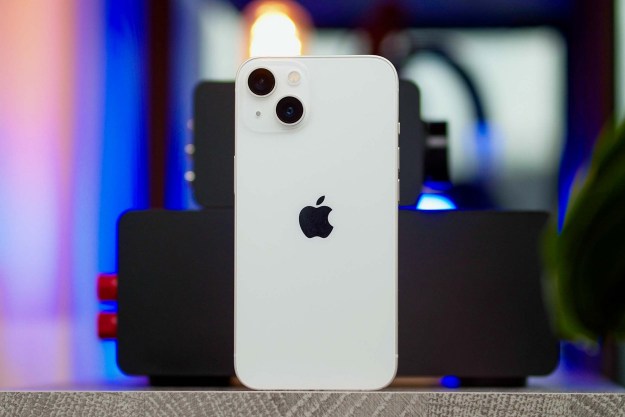The iPhone 11 and iPhone 11 Pro bring substantial improvements to the cameras, making Apple’s latest comparable if not better than the best of the competition. But right out of the box, there are some things you’ll want to change.
- Changing text size
- Customize the Control Center
- Flip on Dark mode
- Set your notification preferences
- Set messages to share your personalized contact info
- Turn on Text, Call, and FaceTime forwarding
- Filter unknown calls and messages
- Turn off the two-minute expiration time on audio messages
- Set location preferences to ask every time for certain apps
- Set your preferred filming speed
- Set phone to erase after 10 bad attempts
- Turn off required attention on Face ID
- Choose what format to store pictures and videos
Whether it’s setting your new location privacy features or filtering out unknown calls and messages, these are the 11 key settings to change on your new iPhone 11. Do note that a lot of these will apply to older iPhone models running iOS 13.
Changing text size
No matter which iPhone 11 model you use, it’s important to find the right text size for your vision. Adjusting it will make all the difference, whether you’re scrolling through your social media feed or reading emails.
To do this, open up your Settings > Display & Brightness > Text Size and drag the slider left or right to adjust the size. A text sample at the top will preview your changes. Simply go back or swipe home when you’re set. It’s also worth mentioning that there’s a toggle to turn on bold text in the Display and Brightness page.
Customize the Control Center
The Control Center is a convenient hub that gives you quick access to a bunch of settings and tools on your iPhone. There’s a layout of toggles available to use by default, but you might not find use in all of them. Luckily, iOS lets you customize what’s on your Control Center.
To add, remove, or reposition the toggles, go to your Settings > Control Center > Customize Controls. Tap on the minus sign next to the controls that you want to remove, and the plus sign next to the ones that you want to add. To reposition the controls, tap and hold the move symbol on the right side and drag up or down. You can see the new layout by swiping down on the right corner of the screen.
Flip on Dark mode
With iOS 13 comes the long-awaited Dark mode to give our eyes and battery a break. Aesthetically, it’s a nice touch that makes the iPhone feel new and it might help battery life a bit too, specifically on the iPhone 11 Pro and iPhone 11 Pro Max as they have OLED panels.
It’s easy to enable and permeates through certain stock wallpapers and compatible third-party apps, like Twitter’s dark theme, as well. Just head to Settings > Display and Brightness and choose between Light or Dark. It’s the one instance where turning to the dark side doesn’t have problematic consequences.
Set your notification preferences
Whether you’re new to iPhone or smartphones in general, you’re going to want to take advantage of the different notification settings to manage and keep track of your alerts. On the iPhone, you can choose how notifications pop up (if at all) per specific app, as well as how these per-app alerts are grouped.
You can also choose whether or not to show an app notification’s content on the lock screen or if you’d only like it shown when your face has been recognized. It’s a neat feature to customize how you interact with your phone and how it delivers information to you — arguably one of the most important aspects of a smartphone.
To customize this, head to Settings > Notifications > Show Previews to select how content is or isn’t shown on the lock screen, or head to Settings > Notifications to change lock screen appearance and more for individual apps.
Set messages to share your personalized contact info
New to iOS 13 is the option to create your own contact photo and name to be displayed on other people’s iPhones. You can choose whether this is enabled for just contacts or everyone, though they have the final say on whether they accept your preferred information.
This can be made independently of your Apple ID information. Tap into Settings > Messages > Share Name and Photo where you can configure these and whom this automatically gets shared with.
Turn on Text, Call, and FaceTime forwarding
For those with other Apple devices, this is a must. Texting from your MacBook is so seamless and easy, and Apple Watch and iPad texting are just as useful. This won’t work with Apple TV, as it’s not equipped for calls or messaging of any kind, but turn this on if you have other Apple products.
For calls, simply navigate to Settings > Phone > Calls on Other Devices, and toggle on the switch for the devices you’d like to receive calls on. It’s similar for messages and FaceTime, as well. Settings > Messages > Text Message Forwarding gets you to the same toggles for messaging, and Settings > FaceTime and make sure your phone number or the Apple ID you’re using on both devices is selected under “You Can Be Reached By FaceTime At.”
Filter unknown calls and messages
This is a great one for weeding out robocalls and spam texts. Whereas Google’s Call Screening feature, meant to achieve a similar function, will actually ring and let you choose to screen the call, the iPhone’s “Silence Unknown Callers” feature won’t ring at all if enabled. Essentially, any phone call from a number not in your contacts, recent outgoing calls, or Siri Suggestions, will be immediately sent to voicemail, where the caller can leave a voicemail. You’ll only receive a voicemail notification (if one is recorded) and the call will be displayed in your recents (and as a notification).
Similarly, you can have messages from unknown senders silenced and sorted into a separate list in your inbox for further review.
For phone calls, head to Settings > Phone > Silence Unknown Callers and toggle the switch on to filter calls, or Settings > Messages > Filter Unknown Senders for message filtering.
Turn off the two-minute expiration time on audio messages
I’m not sure why Apple treats audio messages sent through iMessage as a sort of Snapchat-esque “listen once then it’s gone forever” message, but it does. The default setting is to have these messages expire after two minutes, and the only other option is never. If you’d like to choose the latter here’s how.
Settings > Messages > Audio Messages > Expire and select never.
Set location preferences to ask every time for certain apps
With iOS 13 comes new privacy features and this is one of my favorites. iOS has long allowed you to choose per app whether you’d like it to have access to your location only while you’re using it, always, or never, but this new option can have the phone ask you every time it’s requested. It’s a nice option to have to keep track of who’s keeping track of you.
To enable this, go to Settings > Privacy > Location Services where you can set a general rule for all apps, or go into each app and select never, always, while using the app, or ask next time. That last option will prompt the phone to ask you each time an app requests your location data.
Set your preferred filming speed
The iPhone 11 series offers filming in 4K 60 frames per second which saves only in the high-efficiency format, as well as the more universal 24 and 30 fps which store in the more compatible .mov format. This setting makes movies look ultra-smooth and the iPhone 11’s improved video stabilization makes it smoother. You can opt for 24 fps though if you want a more cinematic look.
To set this, head to Settings > Camera > Record Video and choose your preferred filming speed.
Set phone to erase after 10 bad attempts
At first thought, you may think this should be set by default, but considering errant button presses from either your butt or your kids, it’s probably best left off for some people. Erasing your entire phone is a pretty big deal, and for most people, 10 failed passcode attempts in a row is a lot to get to but be aware of the potential risks here.
Otherwise, feel free to enable this by going to Settings > Face ID and Passcode and all the way at the bottom you can toggle on Erase Data.
Turn off required attention on Face ID
Required attention on Face ID is a default feature meant to afford slightly better security for unlocking your phone or otherwise providing face authentication when you actually mean to do so. This feature checks for eye contact when trying to verify your face for unlocking the phone or filling in login information.
But turning this feature off will make unlocking your phone less of a focused effort. For example, say you need to access your phone in the middle of a conversation with a friend or colleague, but you don’t want to break eye contact to unlock your phone. Your iPhone will automatically recognize you faster as you align it with your face for quick access.
To disable the setting, open Settings > Face ID and Passcode > Require Attention for Face ID and switch the toggle to off.
Choose what format to store pictures and videos
More recent generations of iPhones automatically save photos and videos in high-efficiency format, which saves space. The downside to this space-saving format is that not all platforms and programs are compatible with it. Incompatibility can cause issues when users upload media. If wide-ranging compatibility is more important to you than storage space, it might be a good idea to change the phone’s settings to save pictures as JPEGs instead.
It’s easy to do. Open Settings > Camera > Formats and choose Most Compatible rather than High Efficiency.
Editors' Recommendations
- A big iPhone update is right around the corner
- Best iPhone 15 deals: How to get Apple’s latest iPhone for free
- Best iPad deals: Save on iPad Air, iPad Pro, iPad Mini
- Best iPhone 14 deals: Unlocked and refurbished
- iPhone 16: news, rumored price, release date, and more













































